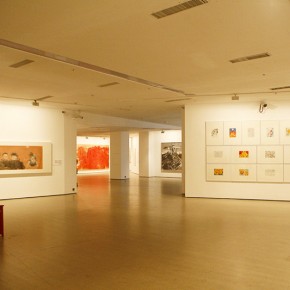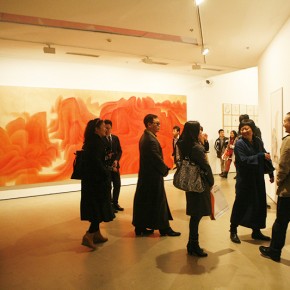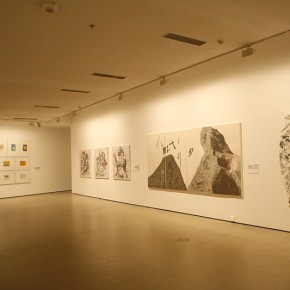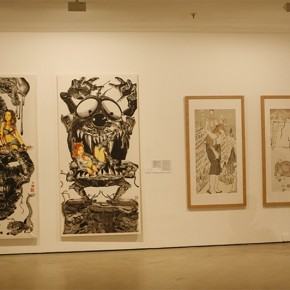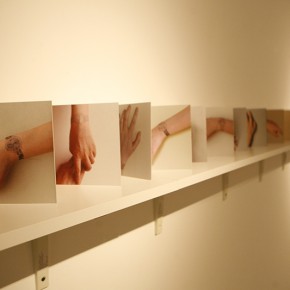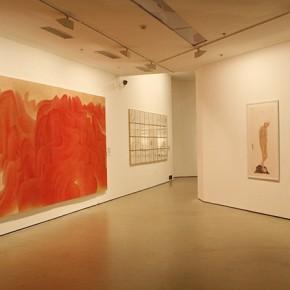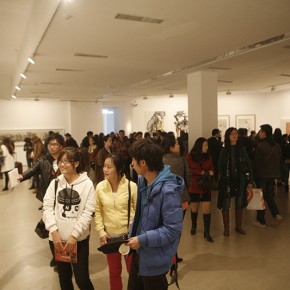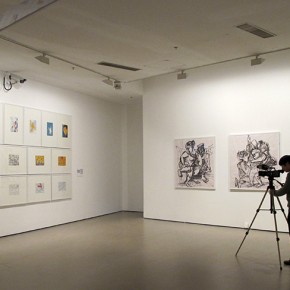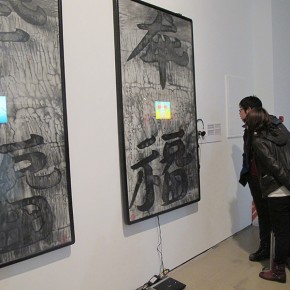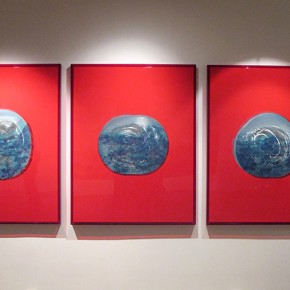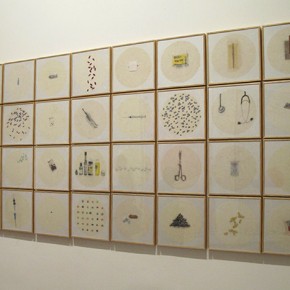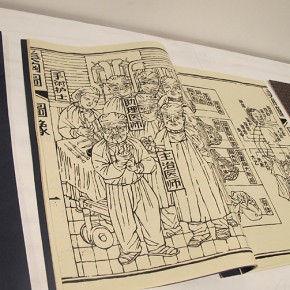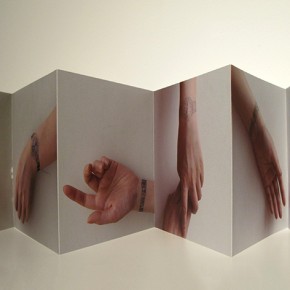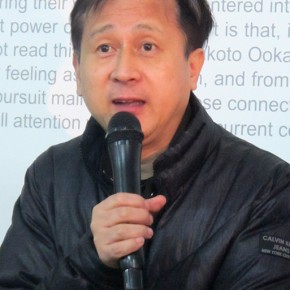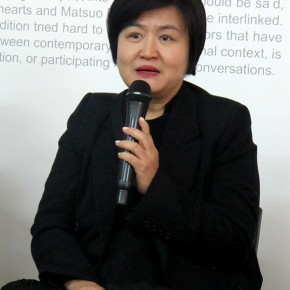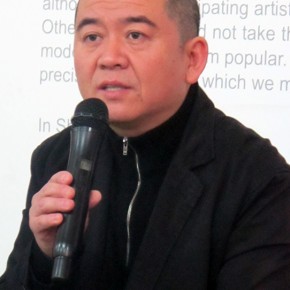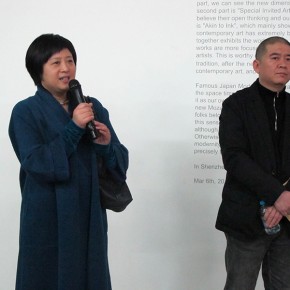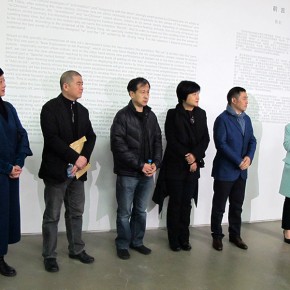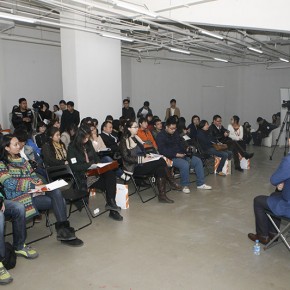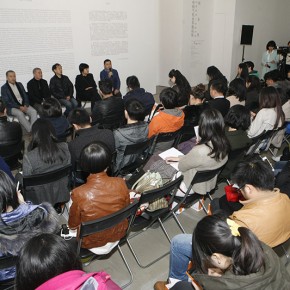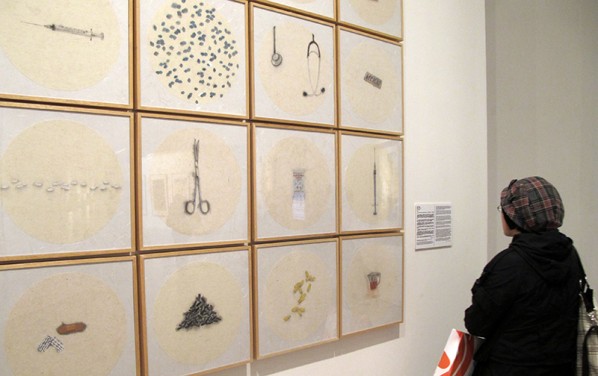
Jointly hosted by Hubei Museum of Art, Today Art Museum and 99ys.com, “Re-Ink: Invitational Exhibition of Chinese Contemporary Ink and Wash Painting 2000-2012 ” opened at the Today Art Museum on April 2. It will be on view through to April 16, 2013. Lu Hong, Art Director of Shenzhen Art Museum, serving as its curator, Ji Shaofeng, Deputy Director of the Hubei Museum of Art, serving as its academic advisor, the exhibition features more than 200 pieces of work themed on “ink and wash” by 62 contemporary artists from across China.
At the very beginning, Xie Suzhen, Director of the Today Art Museum introduced the exhibition to the audience. She held that the most pathetic thing for Chinese art lied in that many of us still talk about Picasso or some masters from the West. She expressed her wish that the Chinese could be proud to talk about masters of fine arts from our homeland while children can be very pleased to print the graphic art of these masters as the fashion of the day on their T-shirts.
Ji Shaofeng, Academic Host of this exhibition summarized two concepts of “Ink and Wash” and “Re-Ink” in his speech: on the one hand, ink and wash is the art form as well as the way to know and observe things during the period of farming civilization; on the other hand. Re-Ink is the product born from contemporary society as well as its experience in the thoughts of contemporary artists. He emphasized that these were two concepts totally different from each other. “Re-Ink “ as a future-oriented dynamic concept offers no answer but hopes to arouse discussions and attention on the future possibility of ink and wash paintings.
Curator Lu Hong admitted that he felt familiar with the surroundings when he came to the Today Art Museum though he had not been there since 2009. He expressed that Chinese Ink and Wash has come into maturity after so many years, which has undergone a development different from the cultural strategy “anti-tradition” and “convergence of Western culture” emphasized by so called artists of “new ink and wash” in the 1980s. It is obvious that China’s new ink artists pay more attention to the values of “Re-tradition” and “Re-Chinese” after entering the new century. When talking about the idea conveyed by “Re Ink”, Lu Hong held that “the so-called ‘re-ink’ refers to the feelings of contemporary artists based on the present, including their re-exploration, recreation in ink and wash. I think tradition does not depend on inheritance but creation.
Jin Weihong thought that “this age has brought us so many thoughts and feelings, ink and wash painting is actually a way that an individual uses his weak aspiration against the fashion trends of the whole society. This exhibition has conveyed our values and appeals. However, I would like to credit the future with three hopes: firstly, please give us more suggestions; secondly, the popular “favor of ink and wash” should not be hyped up, instead, it should contribute to the quest of what is exactly meant by the artist with ink and wash; thirdly, ink and wash draws more attention from the market.
“Re Ink” is divided into four parts. First of all, there is a “Special Invited Exhibition” featuring the works by some outstanding Chinese oil painters, under the guidance of new ideas, learning from the nutrition of traditional ink and wash, it is of great significance to explore new possibilities in ink and wash painting, it is certain that their works inspire the creations of the artists of New Chinese ink and wash. Secondly, because some outstanding artists of installation and video have done well to transform the elements of ink and wash into their works during their exploration, there is the “Exhibition Related to Ink and Wash”, the first unit of which features the installations related to ink and wash, and the second one features videos related to ink and wash. Their works make it clear that: the connotation of the concept of ink and wash painting has expanded to “ink and wash art” from “ink and wash painting”, from the two-dimensional to the three-dimensional. Thirdly, the main exhibition is the “Exhibition to Explore New Ink and Wash”. The first unit features the works of the new expression of abstract ink and wash during the new century, and the second one focuses on displaying the figure creations in the new styles that are closely related to current culture and especially to contemporary urban culture. Through this section of the works, we will be able to discover that artists pay more and more attention to traditional aesthetic pursuits and writing approaches, along with drawing in a variety of new art styles. Finally, there is the “Cutting-Edge Exhibition of Ink and Wash”, featuring the works by young artists, growing up with the development of technology, commercialization and urbanization. Obviously, their works focus on a microeconomic experience and micro-narrative, and the images are also different from the previous generation of artists’.


